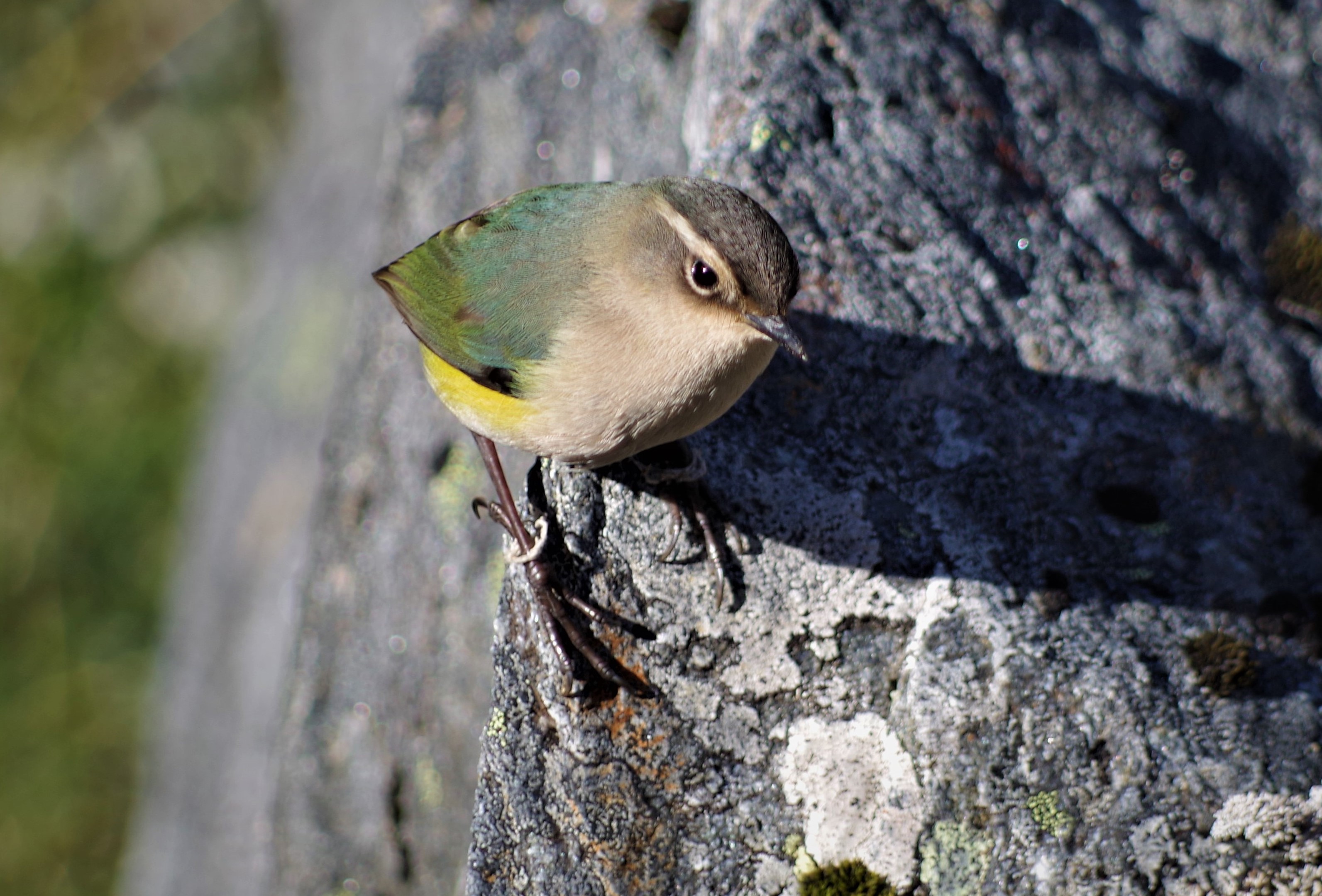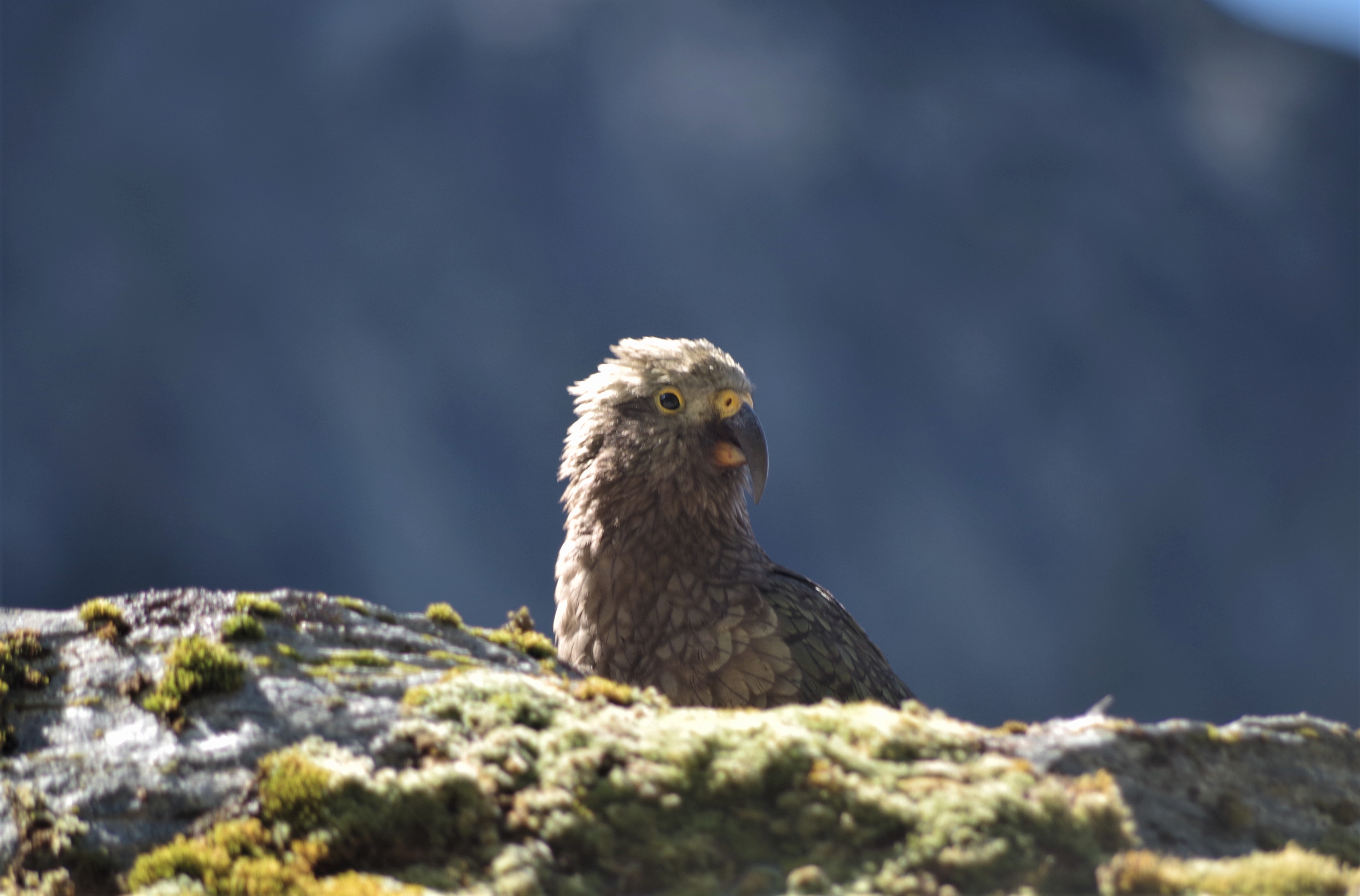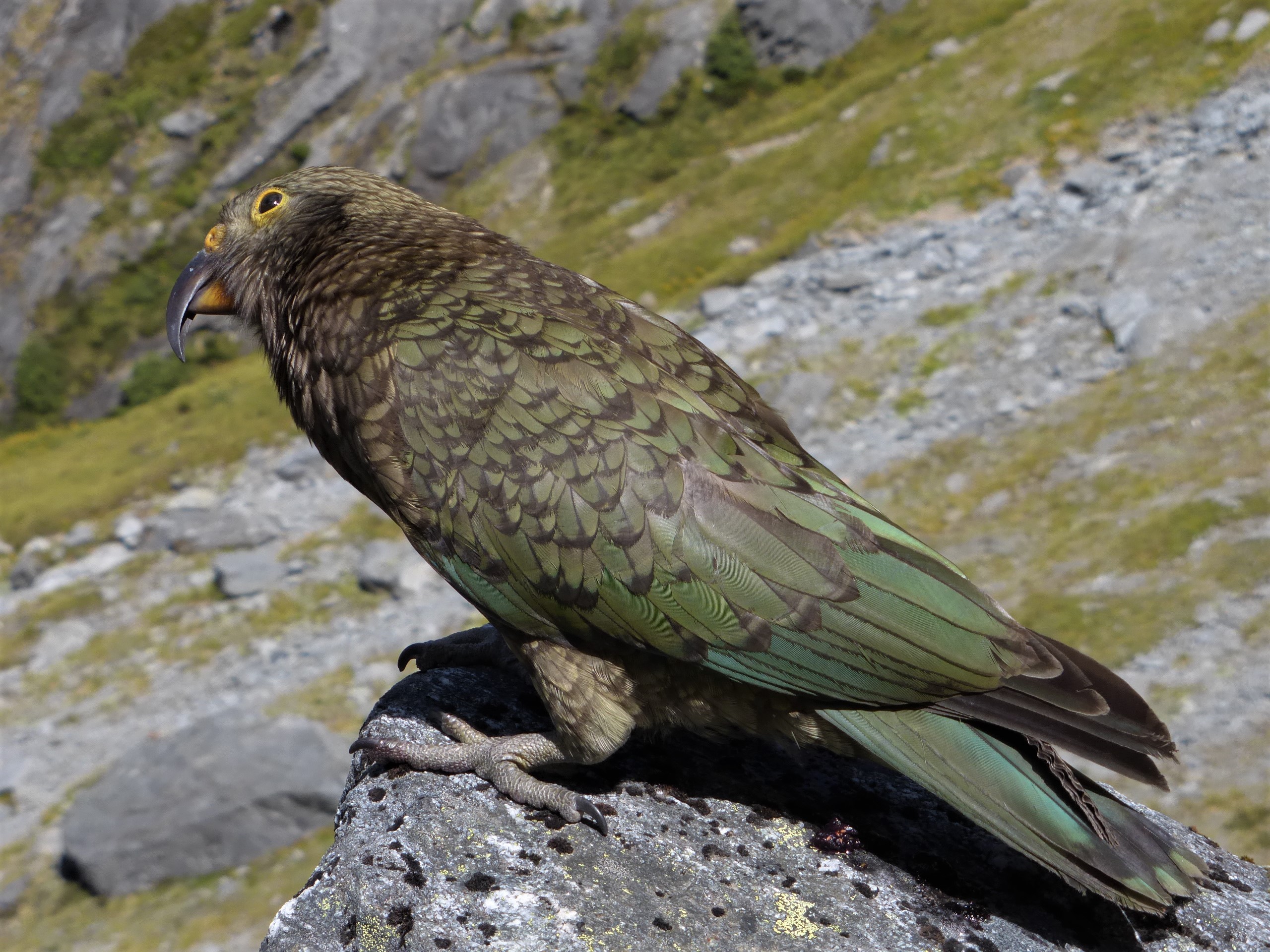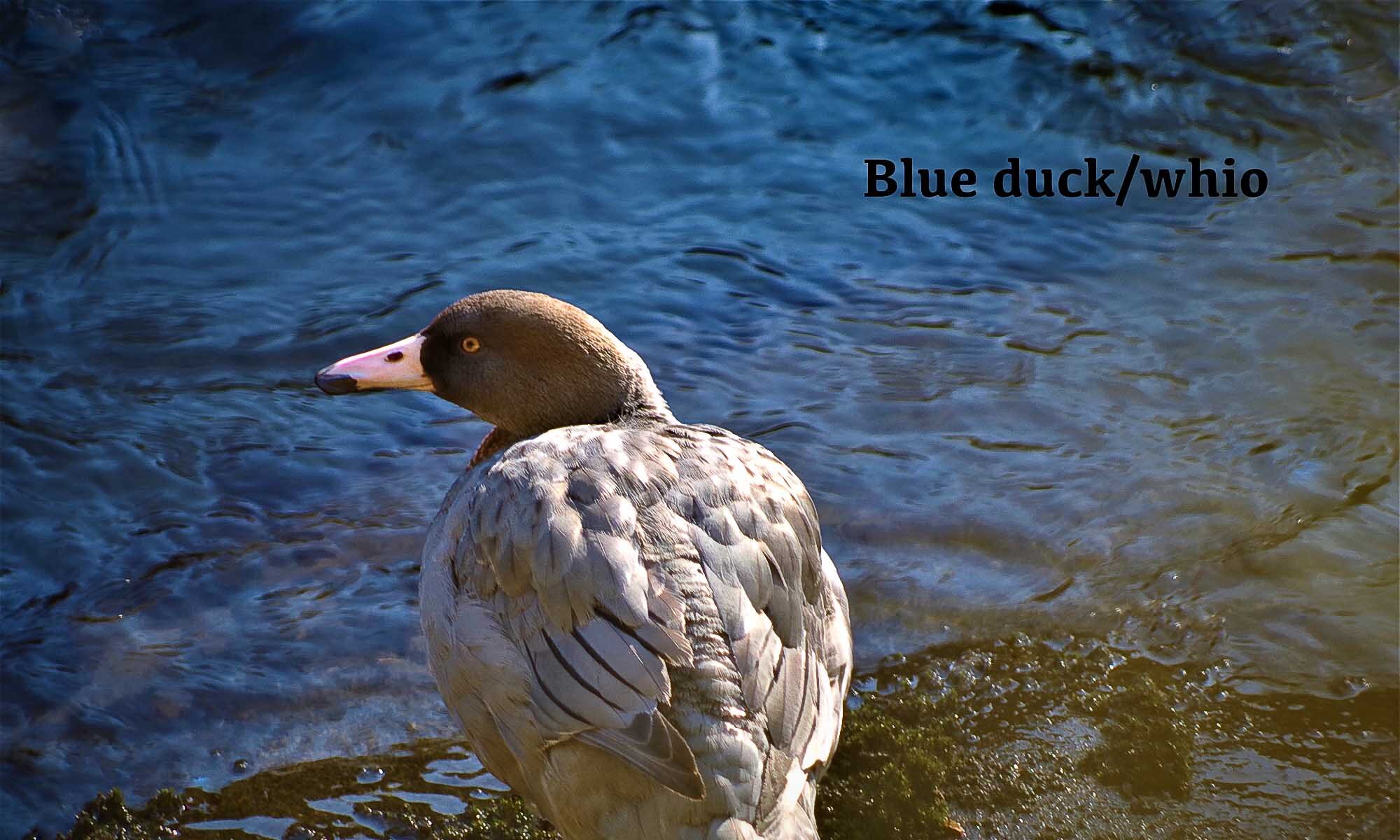ABT’s rock wren transect survey monitoring programme for the 2017/2018 survey season includes the Crucible Basin situated within the Siberia Valley. Monitoring surveys aim to provide an updated baseline on threatened species and allow repeatable monitoring for rock wren within the Makarora catchment to help guide appropriate future conservation management in relation to invasive mammalian predators.

A number of rock wren pairs were recorded present within the bolder-field and moraine habitat and evidence of adults foraging invertebrates for nestlings was noted. During rock wren surveys the Crucible Basin was also noted as an important site for kea as well as rock wren. On both survey occasions seven kea were observed, mainly this years juveniles with their characteristic yellow ceres, eyelids and pale crowns. Kea parents were observed feeding young fledglings regurgitated food and a rock bivi frequented by kea was found close to Lake Crucible.
A pair of rock wren below photographed during their diagnostic bouncing display on their long legs with occasional emissions of characteristic sharp tweet calls http://nzbirdsonline.org.nz/species/rock-wren#bird-sounds.


ABT are collaborating with the Department of Conservation (DOC) to develop mammalian trapping regimes for rock wren within the alpine environment of the Makarora catchment from ridge to river.

All kea records in relation to ABT’s survey and monitoring have been forwarded to the Kea Conservation Trust to help inform a national kea database.
Generally, our time at Crucible Basin was positive however, we did note an aerial drone trying to film kea and artificial feeding by visitors. These are two national issues where continued awareness raising is crucial for New Zealand’s threatened species. Image below shows a hunkered down kea looking up at the drone buzzing above whilst others disappeared beneath boulder habitat.



